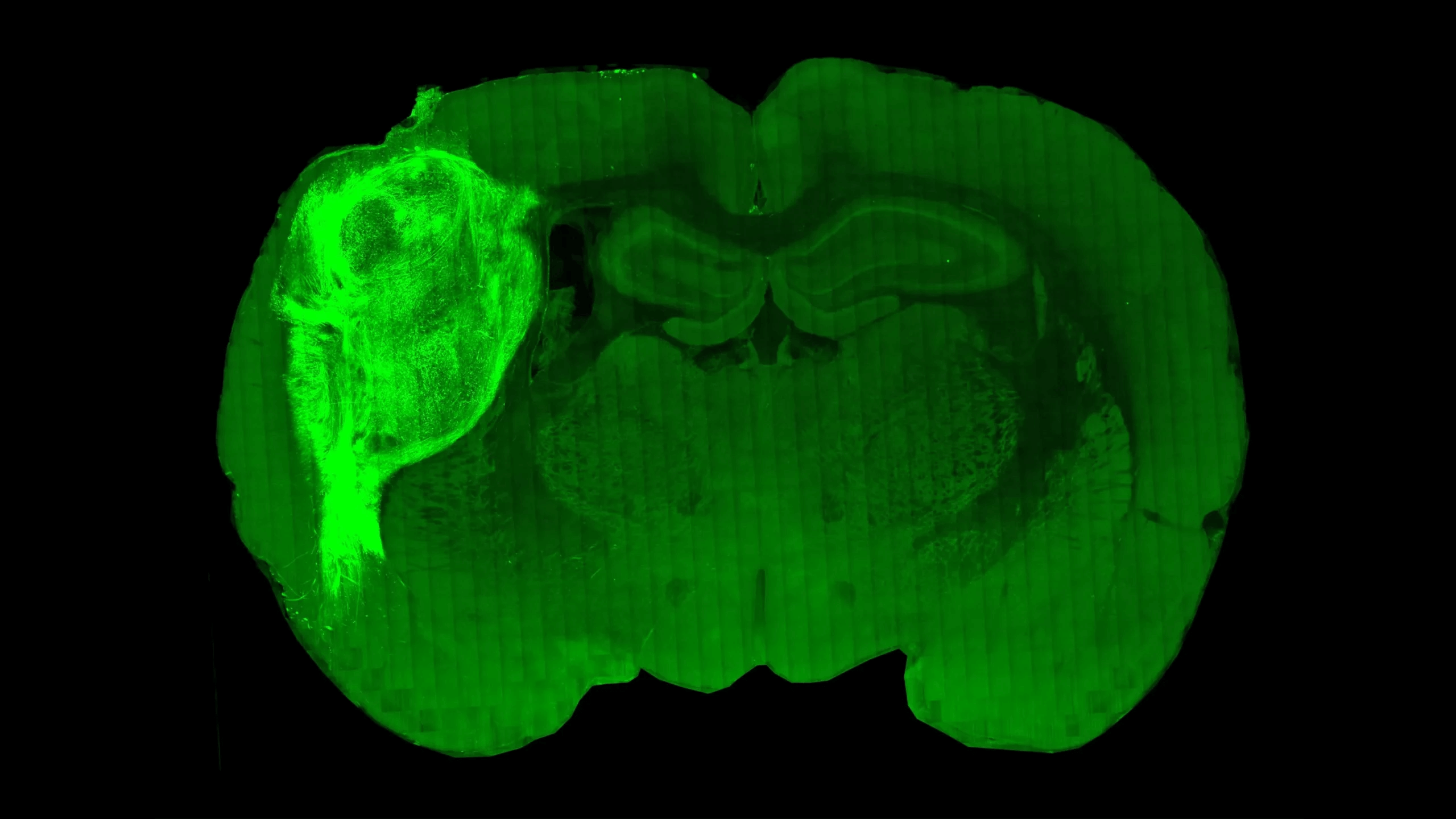Our understanding of the inner workings of the human brain has long been held back by the practical and ethical difficulty of observing human neurons develop, connect and interact. [October 12] in a new study published in Nature, neuroscientists at Stanford University led by Sergiu Paşca report that they have found a new way to study human neurons — by transplanting human brainlike tissue into rats that are just days old, when their brains have not yet fully formed. The researchers show that human neurons and other brain cells can grow and integrate themselves into the rat’s brain, becoming part of the functional neural circuitry that processes sensations and controls aspects of behaviors.
Using this technique, scientists should be able to create new living models for a wide range of neurodevelopmental disorders, including at least some forms of autism spectrum disorder. The models would be just as practical for neuroscientific lab studies as current animal models are but would be better stand-ins for human disorders because they would consist of real human cells in functional neural circuits. They could be ideal targets for modern neuroscience tools that are too invasive to use in real human brains.
































